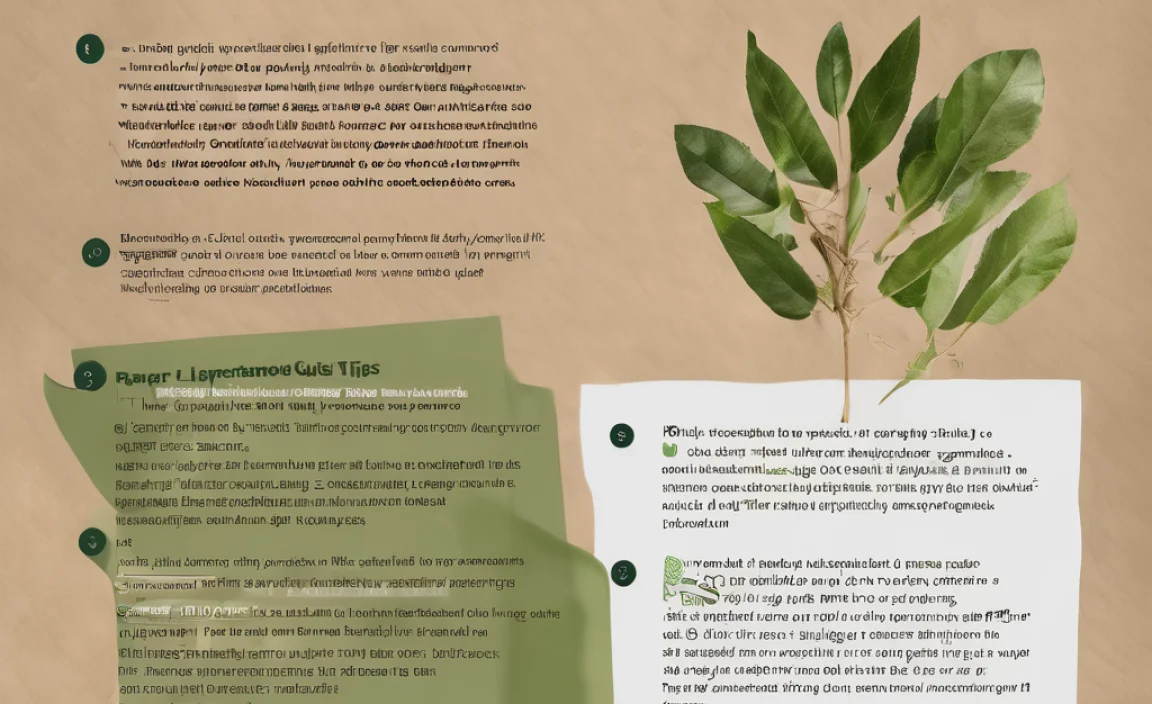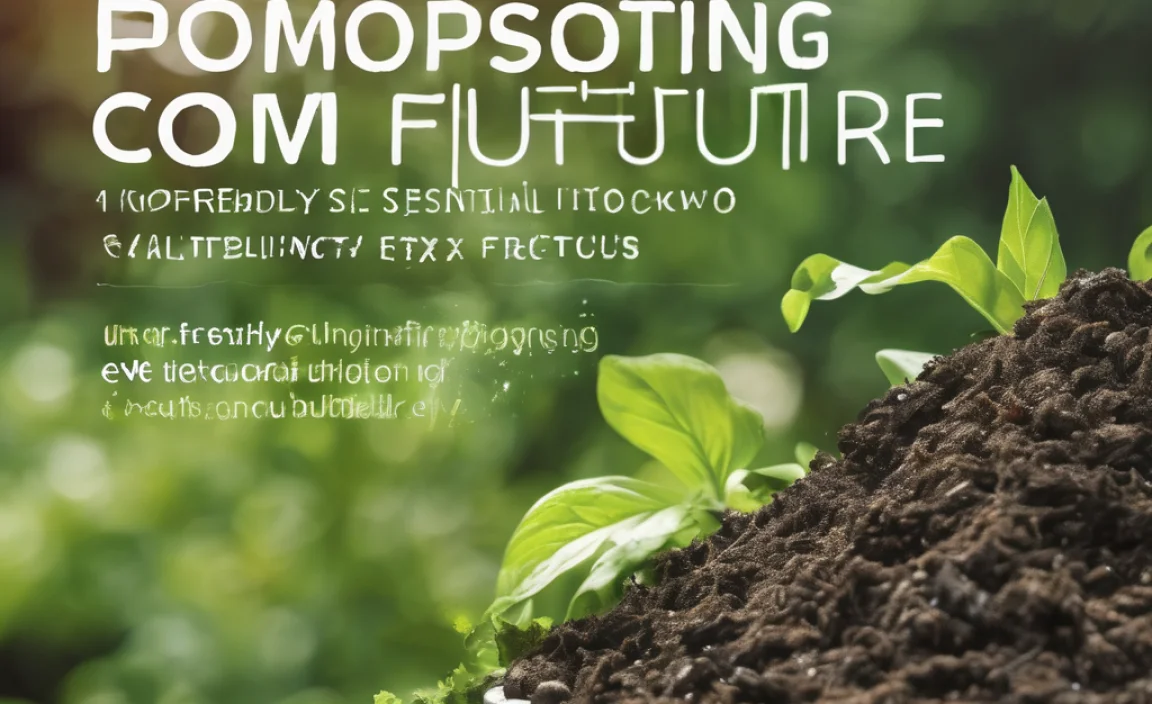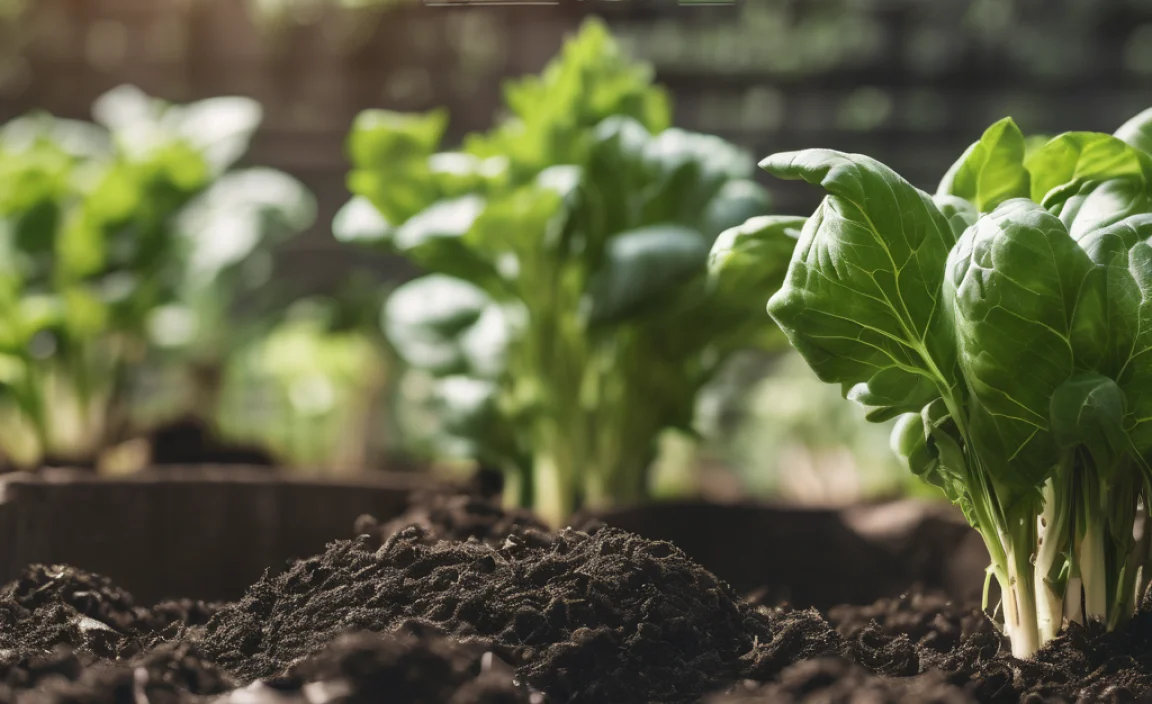Have you ever wondered what to do with leftover sawdust? It might seem like waste, but it’s actually a treasure for your garden! Sawdust can enrich soil and help the environment. With a sawdust composting guide, you can turn wood shavings into nutrient-rich compost. Curious about how it works? Let’s explore the wonders of sawdust in composting!
Key Takeaways
- Sawdust composting enriches soil with nutrients and organic matter.
- Mix sawdust with green waste for faster decomposition.
- A sawdust composting guide helps beginners get started.
- Keep your compost pile moist for best results.
- Compost ready in 6–12 months with proper care.
Sawdust Composting Guide Basics
Sawdust composting is a simple process. It’s a way to recycle sawdust and improve soil. Sawdust is carbon-rich, so it needs nitrogen-rich materials. Green waste like grass clippings works well. Start by mixing sawdust with green waste. Keep it moist but not soggy. Turning the pile helps it decompose faster. It might take a few months to a year. The end result is rich, dark compost. This compost boosts plant growth and health.
- Mix sawdust with green waste.
- Keep the compost pile moist.
- Turn the pile every few weeks.
- Use a container or bin.
- Let the compost mature for 6–12 months.
Composting is easy and rewarding. You get to recycle waste and nurture plants. The compost also improves soil structure. With patience, your garden will benefit greatly. Try using different green waste materials. Grass clippings, vegetable scraps, and leaves work well. Experiment and see what composts best for you.
Fun Fact or Stats: Sawdust composting reduces landfill waste and enriches soil!
Why Use Sawdust in Compost?
Do you know why sawdust is great for composting? It contains carbon, which is vital for compost. Carbon balances with nitrogen-rich materials like food scraps. This balance speeds up decomposition. Sawdust also absorbs moisture, helping control pile humidity. It prevents bad odors and keeps the pile fresh. Best of all, sawdust is usually free! You can get it from local woodworking shops. It’s a smart way to recycle and save money.
How to Start with Sawdust Compost
Starting sawdust composting is easier than you think. First, gather sawdust from safe sources. Avoid treated wood as it contains chemicals. Mix sawdust with green waste like vegetable scraps. Keep the pile moist by watering it occasionally. Turn the pile with a fork to air it out. This helps to break down materials faster. Be patient; composting takes time. Soon, you’ll see your pile turn into rich, dark compost.
Maintaining Your Sawdust Compost
Maintaining your compost pile is key to success. Ensure it stays moist but not wet. Water it during dry periods. Turn the pile every two weeks to add air. Air is important for decomposition. Check the compost temperature if possible. A warm pile means it’s working well. Cover the pile with a lid or tarp during heavy rain. This prevents it from getting too wet.
Materials for a Perfect Compost Mix
Do you want to know the secret to great compost? It’s all about the mix. Combine sawdust with other materials for the best results. Use green waste and food scraps for nitrogen. Add leaves, straw, or paper for more carbon. You can even use coffee grounds! Each material adds something special. Together, they make nutrient-rich compost. It’s like creating a recipe for garden success!
- Sawdust for carbon.
- Grass clippings for nitrogen.
- Vegetable scraps for nutrients.
- Leaves for added carbon.
- Coffee grounds for minerals.
Experiment with different materials to find your perfect mix. Each ingredient boosts your compost in unique ways. Remember, the key is balance. Too much of one thing can slow decomposition. Keep trying different combinations until you find what works best. Your plants will thank you for it!
Fun Fact or Stats: Coffee grounds add nitrogen and repel garden pests!
Understanding the Carbon to Nitrogen Ratio
Why is the carbon to nitrogen ratio important? It’s the key to fast composting. Sawdust is high in carbon, while food scraps have more nitrogen. A good balance creates the best compost conditions. Too much carbon slows the process. Too much nitrogen makes it smelly. Aim for a mix of 30 parts carbon to 1 part nitrogen. Keep this ratio in mind for efficient composting!
Choosing the Right Compost Bin
Do you need a compost bin for sawdust composting? While it’s possible to compost without one, a bin helps. It keeps everything contained and tidy. Look for a bin with good air circulation. This helps the compost break down faster. Some bins even have a turning mechanism! Choose a size that fits your space. A tight lid helps keep pests away. Happy composting!
Using a Compost Tumbler
Have you heard about compost tumblers? They’re a great tool for composting. A tumbler is easy to use. You load it with materials and turn it regularly. This mixes everything evenly. Tumblers speed up the composting process. They also keep pests out. They’re great for small spaces. Tumblers come in different sizes, so find one that suits your needs. They’re perfect for busy gardeners who want quick results.
Transforming Sawdust into Black Gold
Imagine turning sawdust into black gold for your garden. It’s possible with composting. Start by mixing sawdust with your kitchen waste. Turn the pile often and keep it moist. Soon, it transforms into rich, dark compost. This compost improves soil fertility and structure. Your plants will grow healthier and stronger. It’s like giving them the best nutrition possible. So don’t let sawdust go to waste. Transform it and watch your garden thrive!
- Mix sawdust with food scraps.
- Turn the pile for better air flow.
- Water the pile to keep it moist.
- Be patient; composting takes time.
- Use finished compost to boost plants.
Composting sawdust is an eco-friendly choice. It reduces waste and enriches your garden. Plus, it’s easy and fun. With a little effort, you can create something amazing. So start today and see the difference it makes. Your garden will love the extra care!
Fun Fact or Stats: Compost can improve plant growth by up to 40%!
Benefits of Using Finished Compost
What makes finished compost so special? It’s packed with nutrients. Compost adds organic matter to the soil. This helps retain moisture and improves soil structure. It also attracts beneficial insects like earthworms. These insects aerate the soil, helping plants thrive. Compost is nature’s way of recycling. It’s free and sustainable. Using it means fewer chemical fertilizers. Your garden becomes a healthy, natural ecosystem.
How to Apply Compost in Your Garden
Applying compost to your garden is simple and rewarding. Use it as a top dressing around plants. This feeds them as they grow. Or mix it into the soil before planting. This improves soil health and structure. Use compost when transplanting seedlings. It gives them a nutrient boost. You can also make compost tea. Water plants with it for extra nutrition. Compost is versatile and beneficial!
Compost’s Role in the Ecosystem
Did you know compost has an important role in the ecosystem? It supports biodiversity. Compost attracts beneficial insects and microbes. These creatures break down organic matter. They aerate the soil and improve plant health. Compost also reduces landfill waste. It recycles nutrients back into the soil. This creates a balanced and healthy ecosystem. Composting is a simple way to help the environment!
Tools for Effective Sawdust Composting
What tools do you need for sawdust composting? Start with a good compost bin or pile. Add a thermometer to check compost temperature. A pitchfork or shovel helps turn the pile. Garden gloves protect your hands. A hose or watering can keeps the pile moist. Some people use a compost aerator. It mixes the pile without heavy lifting. These tools make composting easier and more effective.
- Compost bin or pile.
- Thermometer for temperature checks.
- Pitchfork or shovel for turning.
- Garden gloves for protection.
- Hose or watering can for moisture.
Having the right tools makes composting easier. They help you monitor and maintain the compost pile. Checking temperature ensures the pile is active. Turning the pile adds air and mixes materials. Keeping it moist speeds up decomposition. With these tools, you’ll have smooth and successful composting. Start your composting journey with the right gear!
Fun Fact or Stats: Compost piles can reach over 140°F during decomposition!
Importance of Turning the Compost Pile
Why is turning the compost pile important? It adds air to the mix. Air helps microorganisms break down materials. Without air, the process slows down. Compost can become compact and smelly. Turning also mixes materials evenly. This helps decomposition occur faster. Aim to turn the pile every two weeks. It’s a simple step that makes a big difference.
Checking Compost Temperature
Do you know why temperature matters in composting? It shows the pile’s activity. A hot pile means active decomposition. Check with a thermometer. Ideal temperature is between 135°F and 160°F. Too hot or too cold means trouble. Adjust the pile by turning and watering. Monitoring temperature helps you catch problems early. It’s a handy tool for every composter.
Watering Your Compost for Success
Is watering compost important? Yes, moisture is key. Water activates microorganisms. Without it, the pile dries out and stops decomposing. Check moisture by squeezing some compost. It should feel like a damp sponge. Water the pile if it’s too dry. Avoid overwatering. Keep the pile moist but not soggy. Proper moisture means healthy composting.
Conclusion
Sawdust composting is simple and rewarding. It turns waste into garden gold. Follow our sawdust composting guide to get started. Mix sawdust with green waste and keep it moist. Turn the pile often. Be patient and enjoy the benefits. Your garden will thrive with rich compost. Start today and make a difference!
FAQs
Question: What is sawdust composting?
Answer: Sawdust composting is a way to recycle sawdust and enrich soil. It involves mixing sawdust with green waste and letting it decompose over time. This process creates nutrient-rich compost for gardens.
Question: How long does sawdust take to compost?
Answer: Sawdust composting usually takes 6 to 12 months. The time depends on factors like temperature, moisture, and the materials used. Turning the pile and keeping it moist helps speed up the process.
Question: Why use a sawdust composting guide?
Answer: A sawdust composting guide helps beginners get started. It provides tips and advice on best practices. This ensures successful composting and a healthy garden. It’s a valuable tool for anyone new to composting.
Question: What can I mix with sawdust for composting?
Answer: Mix sawdust with green waste like grass clippings and vegetable scraps. These add nitrogen to the carbon-rich sawdust. Leaves, coffee grounds, and food scraps also work well. Aim for a balanced mix for the best results.
Question: Can I compost sawdust from treated wood?
Answer: No, avoid using sawdust from treated wood. Treated wood contains chemicals that may harm plants and soil. Always use sawdust from untreated, natural wood sources. This ensures safe and healthy composting.
Question: How do I know when my compost is ready?
Answer: Finished compost is dark, crumbly, and smells earthy. It should look like rich soil. There should be no recognizable materials. If it still has a strong odor, it needs more time. Use it when it reaches this stage.



